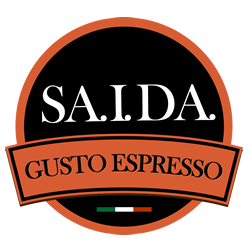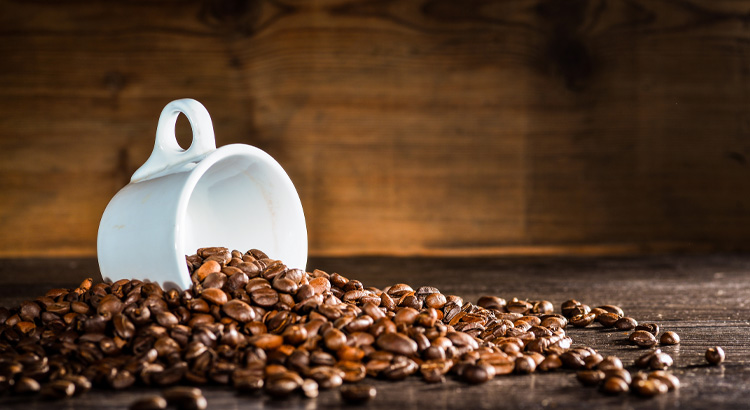More and more often today we talk about coffee drinking as a unique ritual of everyone’s day. In fact, it is true that Italians make great use of coffee, but it is also true that, contrary to popular belief, the very Italians who think they are great coffee connoisseurs have their taste calibrated to a quality that tastes woody, bitter, and often rancid. This recently emerged from a report aired on Report on June 3, 2019 (Watch the full investigation HERE ). It seems almost absurd to state it, but today if we wanted to drink the best coffee we would have to go to Japan or Australia, perhaps closer to us in London and Paris. Let us see, then, what are the secrets so that you can drink coffee that is artfully made…
The mixture
Coffee production is concentrated in areas of the world such as Asia, Africa and Latin America. There are about 60 plant varieties in all, but only four yield marketable beans: Coffea Arabica, Coffea Robusta, Coffea Liberica and Coffea Excelsa. Of these, the most common areArabica and Robusta.
Arabica is grown mainly in Latin America, grows best at high altitudes above 1,000 meters, and requires abundant rainfall. Coffee made from these beans has a milder taste, less bitter, with distinct aromatic sensations and less acidic.
Robusta is produced in West Africa and the Far East. It also grows at lower altitudes and in less ideal conditions of moisture and soil, being a hardier plant it has fewer disease problems. Coffee from Robusta beans has less vigorous taste sensations, is very bitter, has higher caffeine content, but above all is much more full-bodied.
Italy ranks third in the world regarding coffee imports. But we are among the worst importers in the world, spending little and badly. Most imported coffee is of Robusta quality, and by the way it is often of poor quality.
What makes the difference in drinking good coffee, however, is not just the individual products, but the right blend of them. This is the only way to achieve the right balance of aroma, quality, body and caffeine content.
The roasters
Coffee roasters are in charge of importing and especially processing beans that arrive raw and come out roasted, that is, roasted. Coffee roasting is an art on which the taste of coffee depends. So, the different degrees of roasting represent for companies their signature on the final product. During the roasting process, the coffee bean increases in volume and decreases in weight. Roasting can be done in two ways: fluidized bed or rotating drum. Certainly the rotary drum technique is the best, as the grains are cooked slowly, about 20 minutes, and at a temperature of about 210°C, the result leads to a toasted grain with balance.
Very dark roasting, bordering on burnt, which we often tend to use in Italy, actually damages the grain, taking away some of the surface flake and burning it. This procures in the cup astringency and bitterness, burnt aroma the so-called scorching defect, you burn positive aromas.
The bar
We all go to the coffee shop with the intention of drinking great coffee but often the result eludes expectations. Bars and cafeterias are often hostages of coffee roasters (as the same Report story also reported) because, by lowering bar start-up costs, they offer machines and furnishings for free as long as they remain tied to the purchase of their blend. The blends remain secret contrary to what happens if we go for coffee in the very current Specialty Coffees. The owners here, choose the raw material directly from the producers and display the origin and composition of the blends to corroborate the quality of the coffee served.
In addition, assuming the goodness of the blend, brewing a cup of coffee at the coffee bar involves a series of steps and precautions to be taken at the coffee machine to ensure a good result:
- The purge: water is dispensed to remove residue from the previous coffee and clean the machine’s hand showers
- Cleaning the filter holder: it should be cleared of coffee residue with a brush before each brew
- Grinding: coffee should always be freshly ground: in fact, only 15 minutes after grinding, the product has already lost about 65% of its aromas
- Pressing: the coffee should be pressed with the aid of a hand press of a diameter appropriate to the portafilter
- The cleaning of the nozzles: they should always be cleaned before each new extraction
- The extraction: you then hook the filter holder and extract the drink in an expected time between 20 and 30 seconds.
SA.I.DA coffee.
Our coffee, Saida coffee, is chosen and imported by us; we rely on ancient and experienced roasting artisans with whom we have established the blends and the right degree of roasting so that the beans can appropriate the typical coffee fragrance.
Saida coffee at this time has three blends, the high-quality robusta roasted properly and not borderline burnt, although it reflects the national espresso culture consumed by most Italians as described in the report. Then we have the blend composed of robusta and arabica, a balanced coffee for more delicate palates and for consumers who prefer the quality of the finest blends that do not assault the palate, and finally decaffeinated, which, despite the deprivation of caffeine, does not sacrifice the creaminess in the cup sought by most consumers.
Our passion for coffee and many years of experience in the industry dictate that we package and sell only good quality coffee. Saida coffee can be purchased in beans, pods and capsules compatible with the systems currently in use. SAIDA coffee is synonymous with taste quality and convenience.
Buy SAIDA compatible coffee pods and capsules
!
Always keep following us, we will keep you informed about our world with interesting facts and useful tips!!!
Source: Report, June 3, 2019 episode titled“Coffee: the good, the rancid and the ginseng“


Visita il nostro e-shop e scopri tanti prodotti a prezzi vantaggiosi!